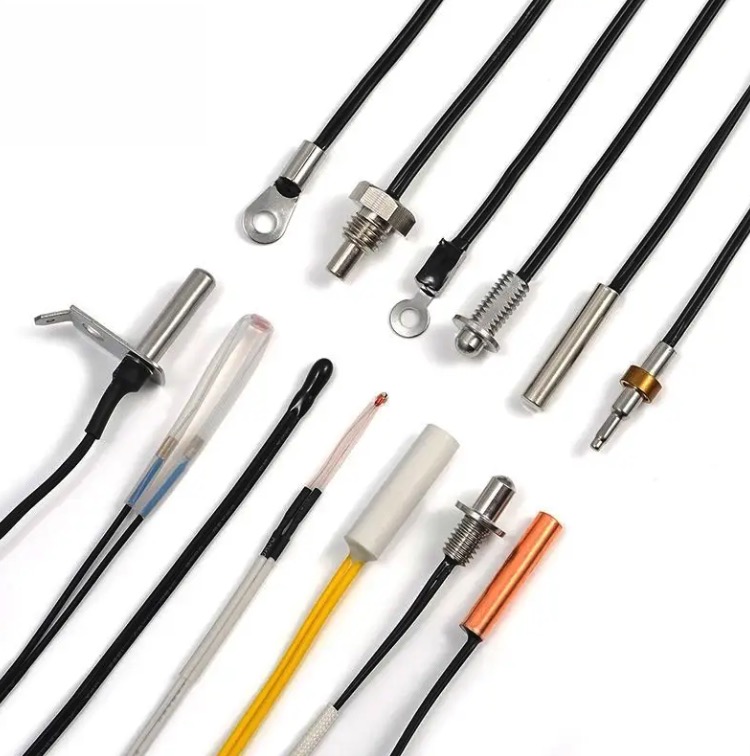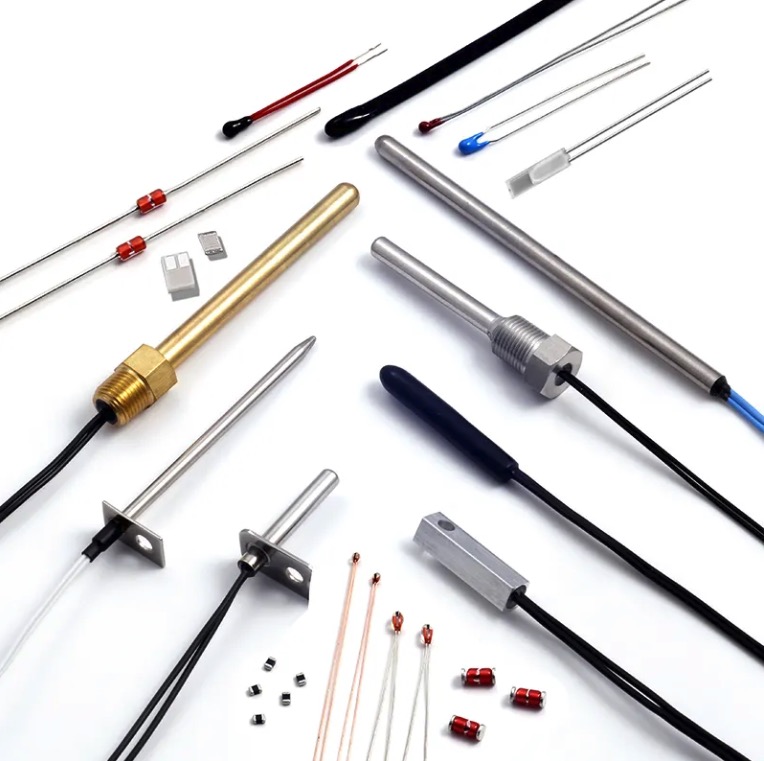In modern HVAC systems, temperature sensors play a critical role in ensuring energy efficiency, performance stability, and user comfort. Among them, NTC (Negative Temperature Coefficient) thermistors are the most widely adopted due to their high sensitivity and cost-effectiveness. This article explores the common types of NTC temperature sensors used in indoor and outdoor air conditioning units, the underlying manufacturing processes, and how to address common failure modes to ensure long-term reliability.
🔧 Common Types of NTC Temperature Sensors
In air conditioners, NTC sensors are typically categorized based on their application environment:
- Indoor Sensors: Operate in relatively stable environments and are often used for room temperature detection.
- Outdoor Sensors: Exposed to harsh conditions such as moisture, extreme temperatures, and dust—requiring much higher levels of durability and insulation.
➤ Sensor Encapsulation Styles
TypeDescriptionSealed TypeStandard plastic molding or epoxy coatingPotting TypeSensor is fully encapsulated within resin for high humidity resistance.
🏗️ Core Element Structure & Materials
Two main NTC types are widely used:
Package TypeModel ExampleCharacteristicsApplicationGlass-Encapsulated Diode StyleMF58 seriesExcellent moisture resistance, consistent via automationOutdoor (pipe, exhaust)Epoxy-Encapsulated TypeMF52E seriesCost-effective, suitable for moderate conditionsIndoor (ambient air)
Glass-sealed NTCs outperform in moisture resistance and temperature shock tolerance, making them ideal for outdoor use.
🧪 Advanced Manufacturing Process
A reliable sensor requires a multi-layered manufacturing approach:
- Core NTC element selection based on operating environment
- Precision lead wire welding
- Silicone resin coating to form a flexible protective layer
- Second encapsulation using special epoxy resin
- Strict quality inspections
⚠️ Common Failure Modes & Root Causes
Failure ModeRoot CauseResistance drift / short circuitMoisture ingress via cable grooves and epoxy cracksB-value deviationInternal corrosion due to trapped vapor or waterLeakage current between leadsCondensed water forming conductive path between terminalsPoor element sealingInconsistent heat sealing in glass-encapsulated diodesMicro-cracks in glass shellThermal stress from epoxy shrinkage during high/low temp cycling
Key Risk: Traditional epoxy resins often crack under bending or thermal stress, exposing internal components to moisture over time.
✅ Proven Solutions for Long-Term Reliability
1. Enhanced Moisture Protection
- Use water-resistant wires that endure boiling water tests for 2000+ hours
- Apply silicone resin over NTC elements to provide elastic and waterproof shielding
- Perform multi-stage epoxy potting with tailored viscosity for gap-free filling
2. Sealing Verification
- Introduce 100% fluorescent pressure testing for core NTC chips to identify microscopic sealing flaws
3. Structural Optimization
- Apply flexible silicone coating on glass elements to absorb thermal stress
- Optimize mold design to reduce temperature-induced expansion mismatch
💡 Key Takeaways
- Glass-encapsulated NTC thermistors offer superior reliability for outdoor air conditioning applications.
- Moisture is the primary root cause of long-term sensor failure—multi-layer protection is essential.
- Advanced materials, precise process control, and full-cycle testing are key to ensuring product stability.
By continuously innovating in sensor materials and manufacturing, companies can significantly improve product life and performance in demanding HVAC environments.





